|
|
|
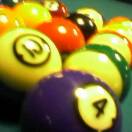 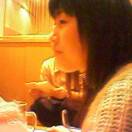 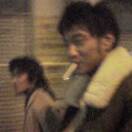 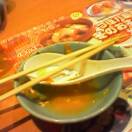 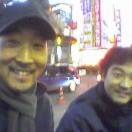 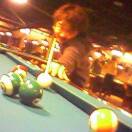  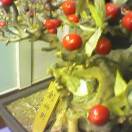 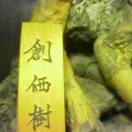 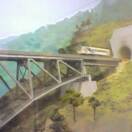 |
4 -- t h e ..l i t t l e .. f i n g e r 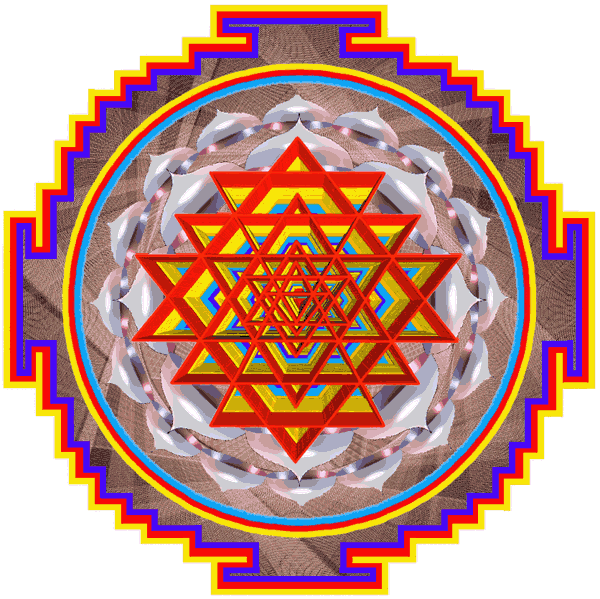
What the Little Finger Means ---- The Little Finger or Auricularius represents the Finger of Mercury.
In olden days, Mercury is the messenger God and is depicted as having winged sandals and carrying the cadeucus. He is the God of communication and mediation. He was also a divine manipulator. Mercury is considered the protector of thieves and businessmen. His Greek name is Hermes.
Hermes presided over magic, education and culture. He is said to have invented the alphabet.

Middle Finger Finger Position ---- Generally, fingers set evenly on a line above the mounts are said to indicate success. An absolutely even line is very seldom met with, and would not be considered either natural or pretty.
There is a general rule which says that any finger set below the others loses some of its power. However, it is extremely rare for the middle finger to be displaced below the other fingers, due to its central position in the hand.
A more helpful method of interpreting the middle finger is to see if it leans one way or the other. Perhaps you have seen or you have for yourself a finger which leans one way or the other? There is meaning in this, just as there is a meaning in every aspect of Palmistry. Let me tell you what that meaning is!
If the middle finger leans towards the index finger, this indicates a superstitious sadness. If the middle finger leans towards the ring finger, however, less morbidity is indicated.
Yet more information can be gained by reading the size of the gaps which exist between the bases of the fingers. For example, a pronounced gap between the index finger and the middle finger (wide enough to let the light through when the fingers are closed) indicates independence of thought. A gap between the middle finger and the ring finger shows a happy-go-lucky attitude towards life and tomorrow.
If all of the fingers fall apart easily, this indicates unconventionality. On the other hand, if they all stick close together most of the time, a stiffness in intercourse with others is shown.
Bent and the Flexibility of Fingers ---- How do you usually hold your hand? It was pointed out to me (another pun --sorry!) by a pyschic named Janene once that I often clench my hand -- not quite into a closed fist but at halfway to a fist. She warned me that if I keep clenching my fingers this way, I am going to end up with arthritis in my old age. ("And you have better things to do in your old age than worry about arthritis," she said.) The way people hold their hands, just like the way they carry their bodies, tells a lot about what is going on inside that individual. According to the good Comte C. De Saint-Germain, bent is the natural position (of the hand) when the subject does not know he is observed. Furthermore, the flexibility of a hand can be judged by the palmist during a reading/consultation.
Hand bent forward. . . If your hand is naturally bent forward (in upon itself) it is said to represent avarice, meanness, excessive prudence and cowardice.
Hand bent backward. . . If on the other hand your hand is naturally bent out, it represents unconventional instincts, a jovial disposition, and talkativeness. Think about: if you see someone walking down the street with their hands bent out, it does look somewhat Bohemian. It looks like someone who has a lot of fun in their life!
On the issue of flexibility:
Stiff fingers. . . Stiff fingers represent practicality and conventioniality, and a sometimes hard and unyielding personality.
Flexibile fingers. . . A Bohemian disposition, inquisitiveness, and no idea of the value of money (but the bearers probably have a lot of fun!)
Finger Sizes in General ---- Now we get on to the matter of finger size. Size is a matter of emphasis -- bigger is stronger and lesser is weaker. Before considering how to interpret the size of the middle finger in particular, let us discuss what the sizes of all of the fingers in general mean. According to the honorable and legendary Comte C. De Saint-Germain:
If you have very long fingers. . . This indicates a meddling disposition, somebody who is forever finding fault, occasionally cruel even if you don't mean to be, and basically tormenting and tormented.
Long fingers. . . A love of detail is indicated here, and an aptitude for doing small things well. People with long fingers have good analytical capacities, but can be overly sensitive sometimes.
Long thin fingers. . . Here we can find the diplomats, deceivers, card sharpers and pickpockets of every kind (you can understand how having long thin fingers would be helpful in this particular profession!)
Average fingers. . . People with average length fingers are generally well balanced, and sometimes very ordinary.
Short fingers. . . Those with short fingers have a quick understanding of things taken as a whole, and synthetical aptitudes. Also represented here is an intuitive faculty (providing the fingers have thin joints).
Very short fingers. . . Bohemian, unconventional instincts shown here, and along with that laziness, selfishness through indifference, and an incapacity to understand and practice the basic duties of life. Cruelty is shown too -- there is a surrender to primitive instincts. Some people call these the Ruffian Fingers.
Finger Sizes in Particular ---- Having given some general parameters for how the size of fingers influences personality, let's get more specific. What does it mean to have a big or small middle finger? It's all a question of comparison with the other fingers.
As the esteemed Comte C. De Saint-Germain says:
Middle Finger in fair proportion to other fingers. . . If the middle finger is in fair proportion to the other fingers, and not abnormally long or unusually short, this is a sign of prudence.
Too long. . . If by contrast hand the middle finger is too long, the individual concerned will exhibit a morbid disposition (especially if the said finger is also flat.
Too short. . . What does it means if the middle finger is too short? Well, frivolity is the result.
Crooked middle finger. . . According to Comte C. De Saint-Germain, hysteria and murderous instincts are indicated here.
Healthy middle finger size. . . A balanced ego is indicated when the index finger (also known as the forefinger) reaches the bottom of the nail of the middle finger.
If your middle finger is shorter than your index finger. . . A bad sign here! The spirit is domineering, almost insane.
Index finger equals middle finger. . . If your index finger is the same length as your middle finger, you have a love of power. This type of index finger has been called the Napoleon index.
Middle finger much longer than index finger. . . Timidity. The individual is reticient in everything they do. Findyourfate.com reports the following wisdom: "A lack of confidence is indicated when the fore finger (index finger) doesn't reach past the bottom of the nail of the middle finger.)
Middle finger much longer than ring finger. . . Blocked emotions are indicated when the ring finger doesn't reach past the bottom of the nail of the middle finger.
Overly prominent middle finger. . . When the middle finger is prominent, standing out from the rest, it shows a serious and intense nature.
Index finger reaches the bottom of the nail of the middle finger. . . Balanced ego.
Index finger reaches past the bottom of the nail of the middle finger. . . Great confidence.
Ring finger reaches the bottom of the nail of the middle finger. . . Balanced emotions.
Ring finger reaches past the bottom of the nail of the middle finger. . . Very emotional and creative impulses indicated. 
Middle Finger Shape ---- The shape of your middle finger has a lot to say about your personality. In the department of Palmistry called chirognomy, paramount importance is devoted to two distinct features in each finger. The first feature concerns the shape of the tip of the first (or nailed) phalanx. The second feature concerns the existence (or absence) of the knots at the joints of the phalanges. Let's consider first the four most common finger tip shapes, and see what they represent:
Pointed finger tips. . . This type of first phalanx tapers from the root to the tip, where it ends in a decided point. The person with pointed finger tips imagines, but does not execute plans well.
Conical finger tips. . . This finger tapers from the root to the tip, where it ends in a round, thimble-like cone. People with these types of fingers (I am one of them) possess a mind in which reason and imagination are equally blended.
Square finger tips. . . This finger retains virtually the same length from the root all the way to the tip. Sometimes it ends in a decided square, but more often it ends in a semi-rounded square. With this type of finger tip/type, reason rules alone.
Spatulate finger tips. . . Like the square finger, the spatulate finger retains the same length from the root all the way up. However, this type of finger actually widens at the tip, such that it looks like a classic druggist's spatula. Denotes execution without conception or contemplation and little native reasoning power.

The Knots ---- So what exactly are the knots, and what do they mean? If you look at the nailed side of your hands (the side facing up when you type a computer, for example) you will see at the joints of each phalanx a knotted series of lines (kind of looking like tree trunk rings in some cases.) Or perhaps you won't see any lines at the joints -- in either case, your hands are trying to tell you something. What did Comte C. De Saint-Germain have to say about these knots:
The upper knot. . . Also called the first knot, this is the one closest to the nail. Saint-Germain considered this the Philosopher's knot. This was the knot which concerns itself with ideas.
The lower knot. . . This is the material knot, the one which concerns itself with matter and the material world.
Knotted joints. . . If the knots are prominent on one particular joint, they are said to be knotted joints.
Smooth joints. . . If the lines on the joint are not so dramatic, they are called smooth joints.
Now, if we combine a reading of the four kinds of finger tip types with the two kinds of joints readings and the two joints into one powerful analysis, we end up with 16 basic personality types. Which one are you?
Pointed fingers, both joints smooth. . . Poetry of the heart and soul is indicated here. Ecstatic religious feeling could be well be present. So is a love of "the essence of beautiful things". These are considered psychic fingers but disordered thinking and action is also represented, and often an incurable laziness.
Pointed fingers, upper joint knotted, lower joint smooth. . . In people with this type of hand there will be a struggle between inspiration and reasoning. In other words, the true believer begins to doubt. The poet loses part of her genius. This has a positive aspect -- inspiration will be put to better use in the execution of the work.
Pointed fingers, upper joint smooth, lower joint smooth. . . Here the artistic gifts of the higher order are subdued by a tendency to practicality which will not be silenced. The artist or poet will be far more successful financially, but will be far from his pure ideal. Did anyone say sellout?
Pointed fingers, both joints knotted. . . The two knotted joints here greatly diminish the native artistic qualities of the pointed tips. The two knotted joints drag the subject from their lofty ideals, and force them to deal with reality. Consequently, this personality type will often be inspired in the direction of inventions and discoveries. However, the discord indicated in their fingers signifies a moody and dissatisfied inner life. It should be noted that pointed fingers are rare as a rule, and knotted joints on pointed fingers almost unheard of.
Conical fingers, both joints smooth. . . Unlike with the previous examples, the poetic gift indicated here is less ethereal, more sensual. The subject will strive to cultivate beauty in the physical form, but will nonetheless maintain a hatred for rigorous logic, and a great independence in thought and manners.
Conical fingers, upper joint knotted, lower joint smooth. . . Here is an artist dominated by practical reasoning. He calculates his efforts and aims at success with a set purpose, but still carries with him a grand idea or concept of art. This type of finger can be found in the hands of all gifted musicians, dramatic actors of high calibre, and so on.
Conical fingers, upper joint smooth, lower joint knotted. . . Moral force is added to this artistic talent. The subject will be very practical in the handling of his or her interests and will insist on proper (moneyed) recognition for his or her talent.
Conical fingers, both joints knotted. . . Here we have the most desirable type for the artist, the inventor, the literary man, the musician, and the actor who has to face the world and make his or her way through it. His/her genius will always be of just the kind which is wanted by his/her time, and he/she will know just how to husband it to full profit. It is worth noting that knots are seldom found in conical hands, and when are present, they are usually slight.
Square fingers, both joints smooth. . . In these fingers is indicated a love of philosophy, social science, reality in art, well ordained and constructed piece of literature, and a talent for devising business plans. It must be said all individuals with square-tipped fingers (regardless of the knots) are independent to some degree, and usually they are honest as well. This is a strong and reason-driven type.
Square fingers, upper joint knotted, lower joint smooth. . . The natural tendencies of the square-tipped type are actually improved if the upper joint is knotted. These people are born to love reasoning, and the upper knotted joint will cause them to excel at it. They will discuss everything, religious beliefs included, but you will find it very hard to change their own beliefs. These people have a capacity for intelligent, useful work.
Square fingers, upper joint smooth, lower joint knotted. . . This will increase the practical bent of the subject, but reduce her capacity to properly judge the cause before the effect. This type is that of the model employee, the disciplinarian, and the pedgogue. In other words: duty comes before everything, and no discretion is employed (discretion being the realm of the employer, after all.) Obey, and above all, be orderly!
Square fingers, both joints knotted. . . Here is revealed a love of the natural sciences, archaeology, and law. This person is an excellent financier, and a fanatic for symmetry. Common sense predominates over genius, and there is no general love for poetry, art or literature. Apt to prefer the usual to everything else, and to drag down ideals when she has the chance to. This type is honest, exact and indispensible. It is worth noting that in square hands, knots (especially on the second joint) are so common they are virtually universal.
Spatulate fingers, both joints smooth. . . An instinctive understanding of the real world is revealed, as is an need for activity -- especially physical activity. There is a fondness for outdoor sports and outdoor occupations, as well as politics, management and travel.
Spatulate fingers, upper joint knotted, lower joint smooth. . . Here we have the type of the aggressive infidel, the scoffer at every ideal, the born knocker. This type of individual hates sentiment, and has little use for art, unless it is applied to industry. She loves realism, and is a positivist to some extent. Also fond of the sciences and research and development of technology.
Spatulate fingers, upper joint smooth, lower joint knotted. . . The knotted lower joint adds intensity to the instincts developed by the smooth spatulate tips. The love of beauty is in this type at its lowest ebb, but the fondness for well-ordered industries is at its peak. If you have this type of fingers you could make a good general -- if there is a war going on in your neck of the woods!
Spatulate fingers, both joints knotted. . .
Indicated here is a strong interest in activity -- indoor or outdoor, both is okay. The mind of this individual is never satisified until her mind is tired from physical activity. She also has the ability to call upon science to help her in her vast enterprises. It is worth noting that knots are very common in spatulate fingers, especially on the lower joint. This could create some confusion in your readings -- distinguish carefully between the spatulate shape and the lower broadening due to the presence of the first knot.

Tip Shape and Knots in the Middle Finger ---- Having understood how the general shape of the finger tips influence (or reflect) personality, let's get more specific, and consider the case of the middle finger in isolation. Keep in mind that if the middle finger is shaped differently than the other fingers, this is obviously significant.
Pointed middle fingers. . . If the tip of the middle finger is pointed, a morbid fear of the supernatural world is indicated.
Conical middle fingers. . . If the tip of the middle finger is conical, it shows a healthy belief in religion.
Square middle fingers. . . If the tip of the middle finger is square, the individual concerned will be very prudent.
Spatulate middle fingers. . . If the tip of the middle finger is spatulate, an exaggerated love of busyness and activity can be discerned.

The Wearing of Rings ---- Why do people wear rings? Palmistry says that rings are power devices designed to magnify the native power of the hand. That kind of fits in with the Uncloned World idea that by manipulating the symbols of reality (ie, the hand) you can also manipulate the real reality. Wearing rings is an effective but subconscious attempt to do that. For example, some people wear rings to give themselves a layer of emotional armour. Generally, rings on the index finger (fore finger) enhance ambition, while those worn on the middle finger symbolise a materialistic nature. While many people wear rings on their ring fingers, multiple or large rings worn there might be telling you something (ie, emotional or creative frustration.) Rings on the little finger could indicate difficulties in sexual expression.
Contact the author Rob Sullivan at bunyarra@hotmail.com. Anticopyright February 2005/July 2004.
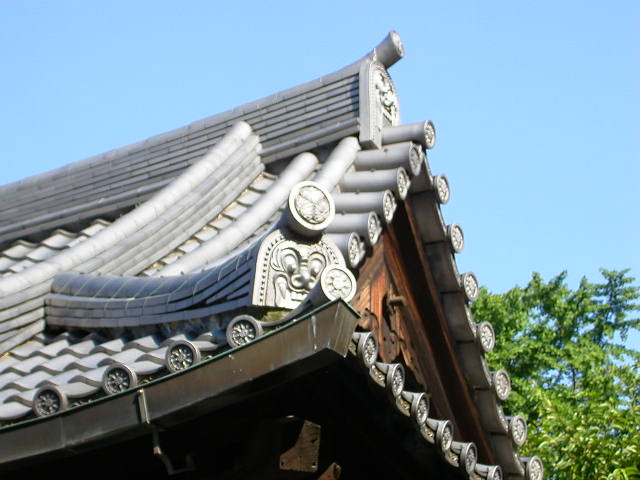
|
|
|
|
